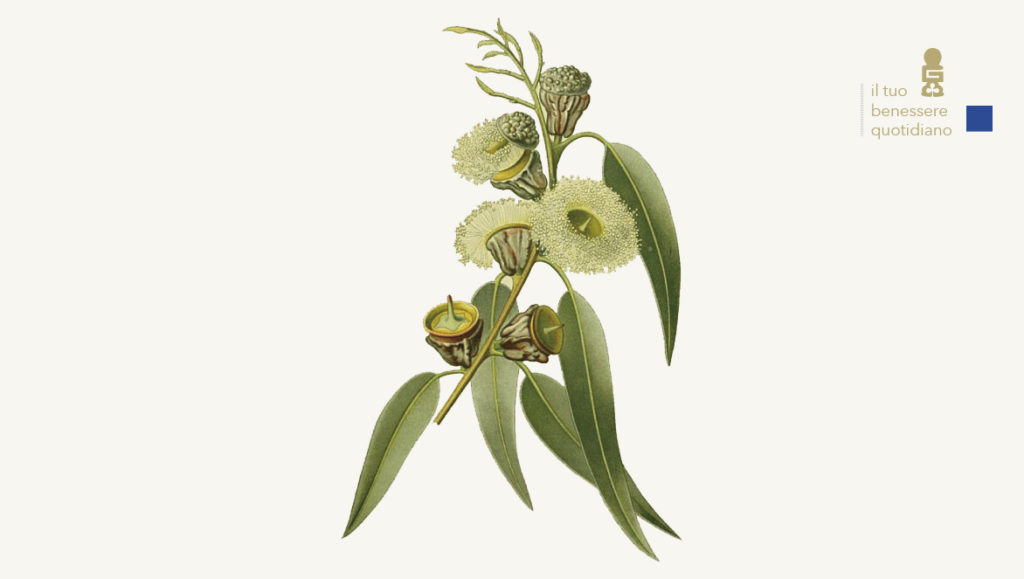Eucalyptus globulus Labill
Eucalyptus has an imposing structure with young branches and opposite leaves of a characteristic glaucous green. It is native to Australia but is cultivated in different parts of the world as well as in Europe and Italy where some 50 species have become well acclimatized. The drug is the leaves of the adult branches since they are more aromatic; harvested in June-September, they are dried quickly and thus preserved.
The characteristic odor is balsamic and aromatic. The active ingredient most commonly found in the essential oil is eucalyptol, which has great application in respiratory ailments with antiseptic and anticatarrhal properties. Along with it is the presence of tannins, triterpenes and flavonoids also eucalyptus essential oil contains α-pinene and 1,8-cineole and acts as an antioxidant, with strong radical scavenging activity . It has balsamic effect, emollient and soothing action (oropharyngeal mucosa) and acts favorably on voice tone.
BIBLIOGRAPHY
V.Formacek and H.Kubeczka, Essential oils Analysis by Capillar Gas Chromathography and Carbon-13 NMR Spectroscopy. John Wiley&Sons, Chichester etc. 1982.
- P. Singh, S. Mittal, S. Kaur, D. R. Batish, and R. K. Kohli, "Characterization and antioxidant activity of essential oils from fresh and decaying leaves of Eucalyptus tereticornis," Journal of Agricultural and Food Chemistry, vol. 57, no. 15, pp. 6962-6966, 2009.
- E. Sadlon and D. W. Lamson, "Immune-modifying and antimicrobial effects of Eucalyptus oil and simple inhalation devices," Alternative Medicine Review, vol. 15, no. 1, pp. 33-47, 2010.
Most A. Akhtar, Ritesh Raju, Karren D. Beattie, Frances Bodkin, and Gerald Münch Medicinal Plants of the Australian Aboriginal Dharawal People Exhibiting Anti-Inflammatory Activity, Evidence-Based Complementary and Alternative Medicine Volume 2016 (2016), Article ID 2935403, 8 pages
